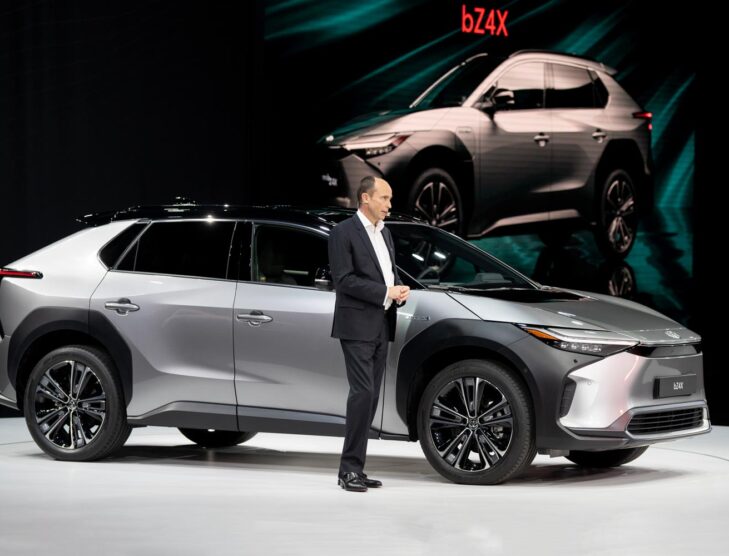
Toyota to roll out more practical and affordable ZEVs in Europe
Toyota Motor Europe revealed that it will roll out an increasing number of practical and affordable zero emissions vehicles (ZEVs) in the coming years, with the bZ4X being the latest model to be launched. By 2030, the ZEV sales mix is anticipated to be a minimum of 50% in Western Europe, with the capacity and capability to further increase should customer demand go even higher.
Toyota Motor Europe communicated the latest news on its European business strategy, sharing the company’s vision, new products and technology developments during the Kenshiki (insight) event for the media this week.
“Moving beyond 2030, we expect to see further ZEV demand acceleration and Toyota will be ready to achieve 100% CO2 reduction in all new vehicles by 2035 in Western Europe, assuming that sufficient electric charging and hydrogen refueling infrastructures are in place by then, together with the renewable energy capacity increases that will be required,” said Matt Harrison, president and CEO of Toyota Motor Europe.
Gill Pratt, chief scientist of Japanese automaker Toyota Motor Corporation and CEO of Toyota Research Institute, Inc., further explained that the path to carbon neutrality is most efficiently based on diversity of powertrain solutions. This is due to the wide diversity of markets around the world, stemming from three key factors: diverse nature of energy sources across regions; the different transportation needs of people; and, thirdly, the imperative to maximise the carbon return on investment to ensure that use of scarce battery raw materials is optimised.
“Whilst Toyota is committed to making millions of battery electric vehicles (BEVs) available to customers, the way to reduce the most net carbon emissions globally is to use every item in our toolbox, including hybrid electric, plug-in hybrid electric, battery electric and fuel cell electric vehicles, with the proportions of each optimised to make best use of the infrastructure constraints and customer circumstances of every region, and the limited supply and improving the performance of batteries,” Pratt said.
More details of Toyota’s battery strategy were shared by Gerald Killmann, vice president of Toyota Motor Europe R&D, following the recent global announcement of its EUR11.5 billion (USD13 billion) battery investment strategy.
World’s first bi-polar nickel metal hydride battery
Commercial production has started on the world’s first bi-polar nickel metal hydride (NiMh) battery which, as well as using less precious minerals, is lower in cost with double the output density of a regular NiMh battery.
By applying similar techniques to lithium ion (Li-Ion) batteries, combined with further efficiencies in vehicle energy consumption, Toyota expects to see a 50% reduction in battery cost per vehicle, without deteriorating range, in the second half of the 2020s; thereby making battery electric vehicles more affordable and accessible.
On the keenly anticipated introduction of solid-state batteries, Killmann confirmed that, following prototype testing last year, they will likely be first introduced in hybrid electric vehicles before wider deployment, including battery electric vehicles, with the aim of delivering higher output, longer range and shorter charging times.
An expanded electrified portfolio will drive Toyota’s further growth in Europe
Toyota Motor Europe expects to deliver 1.07 million vehicles in 2021, for an estimated 6.3% market share, a new record and an increase of 80,000 units compared to 2020. In 2022, Toyota Motor Europe is planning to sell around 1.3 million vehicles for a 6.5% market share, another new record.
Underpinning the anticipated 230,000 sales growth between 2021 and 2022 is strong product power, including wide availability of TNGA platforms and a highest-ever electrification mix of around 70% currently. It is also supported by strong new model introductions including the new bZ4X, the Aygo X, the GR86 and the Corolla Cross.
The Toyota New Global Architecture (TNGA) are modular automobile platforms that underpin various Toyota and Lexus models, starting with the fourth-generation Prius in late 2015.









